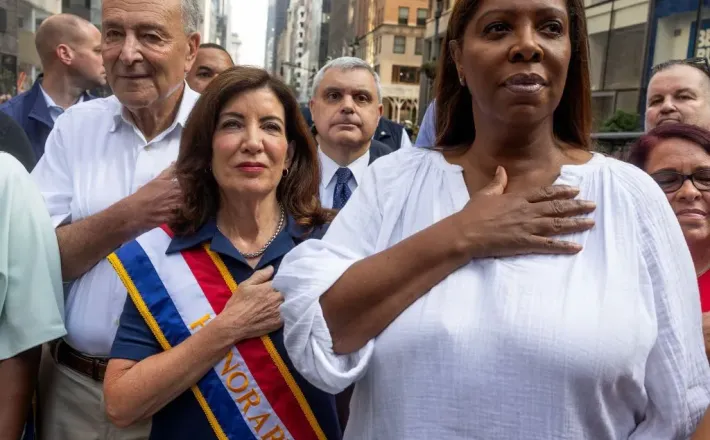Small donor public financing can help more women get elected
Source: Ms. Magazine
In recent years, the share of women in public office has surged.
*In 2000, just 65 women served in Congress. Today, the number is 151, more than a quarter of the total 535 voting members.
*Likewise at the state level, women now make up about a third of elected officials.
Yet despite these historic gains, women—who make up roughly half of the population—remain starkly underrepresented in government. And for women of color, the disparity is even greater.
No single factor created this gap, and no single change will fix it. But part of the problem is how campaigns are funded—and changing that will make a significant difference.
It’s expensive to run for office: Political ad spending in the 2024 election cycle is expected to exceed $16 billion. And the price of campaigning is a greater barrier for women, who typically have less access than men to the wealthy donors who provide most of this money.
Enter: public financing, a simple but powerful reform that uses public funds to boost small donations to candidates. It’s a policy that can help any candidate willing to engage with a broad base of voters—but some of its biggest beneficiaries are women, particularly women of color, who make up 25 percent of the country’s population but less than 10 percent of state and federal elected offices.
Read here the full article published by Ms. Magazine on 25 April 2024.
Image by Ms. Magazine
.

In recent years, the share of women in public office has surged.
*In 2000, just 65 women served in Congress. Today, the number is 151, more than a quarter of the total 535 voting members.
*Likewise at the state level, women now make up about a third of elected officials.
Yet despite these historic gains, women—who make up roughly half of the population—remain starkly underrepresented in government. And for women of color, the disparity is even greater.
No single factor created this gap, and no single change will fix it. But part of the problem is how campaigns are funded—and changing that will make a significant difference.
It’s expensive to run for office: Political ad spending in the 2024 election cycle is expected to exceed $16 billion. And the price of campaigning is a greater barrier for women, who typically have less access than men to the wealthy donors who provide most of this money.
Enter: public financing, a simple but powerful reform that uses public funds to boost small donations to candidates. It’s a policy that can help any candidate willing to engage with a broad base of voters—but some of its biggest beneficiaries are women, particularly women of color, who make up 25 percent of the country’s population but less than 10 percent of state and federal elected offices.
Read here the full article published by Ms. Magazine on 25 April 2024.
Image by Ms. Magazine
.